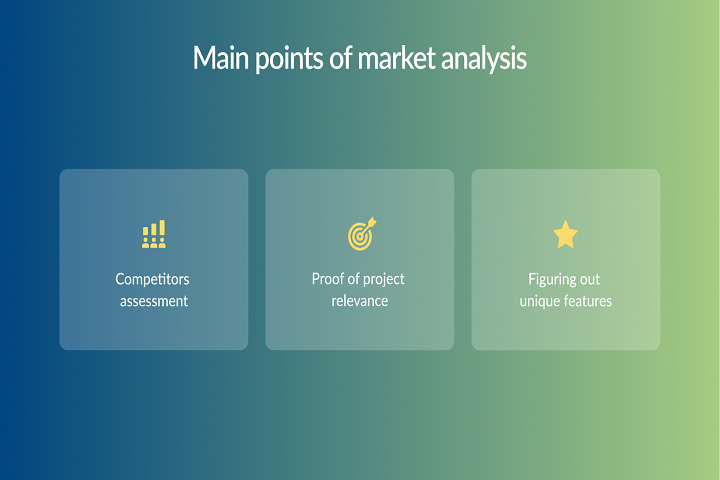Software
Comprehensive Guide on Outsourced Mobile Software Development Cost in 2023
The main reason businesses turn to outsourced software development is cost efficiency. Outsourced mobile software development cost.

Outsourcing software development has both pros and cons. Some business owners assume that in-house products are superior due to their responsiveness. However, by working with a reliable and experienced third-party provider, businesses can save time on recruitment and training processes and benefit from the expertise of the provider’s developers.
Moreover, outsourcing helps prevent companies from investing in expensive infrastructure to house their developers. Additionally, outsourcing development allows businesses to focus on core activities, leaving software creation to specialists.
The main reason businesses turn to outsourced software development is cost efficiency. To understand why you only have to look at the app development cost. So, a simple mobile software can cost you $40,000-$120,000, a more advanced one $120,000-$200,000, and a complex one with many features from $200,000.
An even more cost-effective option is cross-platform development, which allows you to create an application using a single code base. The Flutter framework is often used to build an application that will work on multiple platforms. Developing a mobile app using this method is usually much cheaper than creating a native product for iOS and Android.
Table of Contents
1. What Impacts Outsourcing Development Costs
Developing an application involves many steps and resources. Therefore, estimating the cost of your project requires examining the various factors that can affect it.
Factors such as the number and complexity of features and third-party integrations in the application, design complexity, and the number of platforms substantially impact the final cost. Also of great importance is the chosen outsourcing region, as pricing policies vary significantly in different areas.
Moreover, you should not forget about additional expenses arising during the application development. For example, when planning the budget, you should put the costs of market research, the definition of critical requirements for the project, and the cost of technical support and marketing in advance.
Let’s take a closer look at each factor affecting the price of outsourced development.
2. Outsourcing Development Costs Worldwide
Examining offshore software development rates by country is required to select the most appropriate option. For example, specialists from North America or Europe typically require higher expenses than other areas such as India or Latin America.
Today, IT outsourcing in Europe is gaining popularity. This region is known for its large amount of talent and technology, high government support for the IT cluster, low taxes, and reasonable hourly rates.
When choosing a region for an application development project, you should pay attention to cost, language, and cultural compatibility factors. Making a decision based on these aspects will help you get the best value for money and establish a successful working relationship with developers.
It is essential to thoroughly research the available options and examine portfolios, customer reviews, and relevant expertise to make your partnership with an outsourcing software provider the most effective and beneficial.
3. How Can Outsourcing be Optimized?
By outsourcing application development, you can also participate in some of the processes, such as marketing analysis, competitor research, defining the goals and ideas of the project, and the main functionality. The participation of the project owner in creating the software allows you to achieve the best result in the shortest possible time. You can take on such tasks:

Market Analysis
Before launching any business, including digital, it is necessary to research the market in detail. It would be helpful to determine who your main competitors are and what they have done to attract their customers. That way, you can evaluate your idea and see if it will be successful. Moreover, creating a unique value proposition would be best so that your app stands out among your peers and attracts more users. Finally, think about what you lack in the existing software and add relevant features to your app.
User Research
Considering the specific needs of your target audience, you can create an offer that meets all their needs. In addition, once the app is up and running, take the time to study customer reviews and feedback to improve it and fix bugs. This way, you can satisfy all your customers’ needs and attract new ones.
Launching a fully developed feature-rich app will be more successful if you have a sufficiently interested audience. Therefore, to minimize costs, cautious entrepreneurs often choose a minimally viable product to test users and gather initial feedback before refining the app by introducing more advanced features.
Researching your target audience also plays a significant role in developing your marketing strategy. For example, if the desired audience is between 18 and 23 years old, social media sites such as TikTok can be used for promotion. Otherwise, platforms like LinkedIn are preferable if the target audience is more mature.
Feature List
For outsourced software developers, it is crucial to understand the specifics of the project they are working on. For example, business analysts can help you develop a feature list for a minimum-viable product. However, they need to know everything about your goals, application requirements, etc. Moreover, if the ideas need to be formulated in more detail, this can add time and extra cost to the development project.
You must clearly articulate what you expect to ensure your application is built with only the most necessary features. This will make it easier for the development team to understand what features and technologies are needed to implement your requirements, and it will take less time and resources to create the app.
However, you might need help with these steps or want to avoid dealing with the technical part. In that case, you can turn to a professional software vendor that provides complete discovery services, allowing you to put audience analysis, market analysis, and functionality definition in the hands of professionals.
4. Concluding Thoughts
To summarize, many factors come into play when calculating the cost of developing a mobile app. For example, the app’s complexity, the development team’s location, and other factors affect the overall cost.
If you want to create an app with a high-quality design, extensive features, and reliable performance, it’s worth investing in more experienced developers. Then, choose software providers that offer customized solutions at affordable prices while guaranteeing the highest quality standards.
Programming
Top Benefits of Hiring a Professional Android App Development Company
This guide illuminates the unparalleled benefits that startups, entrepreneurs, tech enthusiasts, CEOs, and CTOs can reap from partnering with a professional Android app development company.

In today’s fast-paced digital landscape, mobile applications serve as the backbone for businesses seeking to thrive and outperform competitors. Particularly, Android, with its expansive global market share, presents a fertile ground for businesses to cultivate brand loyalty and customer engagement.
This guide illuminates the unparalleled benefits that startups, entrepreneurs, tech enthusiasts, CEOs, and CTOs can reap from partnering with a professional Android app development company.
Table of Contents
1. The Rise of Android Apps
Android dominates the mobile operating system market, boasting billions of active devices worldwide—a testament to its ubiquity and user preference. The incentives for businesses to invest in Android app development are compelling, given the platform’s broad reach and the personalized experience it offers users.
These statistics not only underscore the potential for significant market penetration but also highlight the importance of creating a robust presence on this platform.
2. The Need for Professional Expertise
While the allure of developing an app in-house or on a tight budget might seem appealing, this approach often leads to subpar outcomes that can tarnish your brand’s reputation. This section explores the myriad challenges DIY developers face, from technical pitfalls to a lack of strategic insight, framing the conversation around the invaluable benefits of engaging a professional Android app development team.
3. Top Benefits for Businesses: Enhanced User Experience
A seamless, intuitive user interface is crucial for app retention. Professional developers leverage their mastery of the Android platform to craft applications that are not only visually appealing but also highly functional and user-friendly.
4. Tailored Solutions
Every business has unique needs and customer expectations. A seasoned Android app development company will work closely with you to understand your vision, ensuring the final product perfectly aligns with your business objectives.
5. Cost Savings and Faster Time to Market
Expert developers streamline the app development process, utilizing efficient workflows and the latest technology stacks. This efficiency translates to cost savings and a faster launch, giving you a competitive edge in the market.

6. Quality Assurance and Support
Beyond development, professional companies offer rigorous quality testing and post-launch support, ensuring your app remains compatible with new Android versions and hardware variations. This ongoing commitment to quality safeguards your investment over time.
7. Brand Reputation and Credibility
In today’s digital landscape, consumers have high expectations for app performance and user experience. By investing in a professional development team, your brand can establish credibility and build a positive reputation among users.
8. Scalability and Future Proofing
A well-designed Android app should be able to adapt to evolving business needs and technological advancements. Professional developers design apps with scalability in mind, future-proofing your app for long-term success.
9. Maximizing Monetization Opportunities
Expert developers not only create high-quality apps but also offer valuable insights on monetization strategies and opportunities. With their knowledge of the Android market, they can help you maximize revenue from your app.
10. How to Choose the Right Development Company
Selecting the ideal mobile app development company for your Android app project requires careful consideration. Here are some key factors to evaluate:
- Portfolio and Expertise: Examine their past projects to gauge their industry experience and technical proficiency.
- Client Testimonials: Seek feedback from previous clients to understand their working style and commitment to deadlines.
- Communication and Flexibility: Choose a company that values transparent communication and is adaptable to changing project requirements.
- Cost-Efficiency: Ensure their pricing models align with your budget without compromising on the quality of the output.
Conclusion
Investing in a professional Android app development company is a strategic decision that can significantly amplify your business’s digital footprint, enhance user engagement, and drive growth. By partnering with experts who understand the nuances of the platform and prioritize your business needs, you position yourself for success in the competitive app marketplace.
So, choose wisely and take your business to new heights with a high-quality, custom Android app. Keep innovating! High-quality Android app development companies can help businesses of all sizes harness the full potential of the platform to reach their target audience and achieve their business goals.
-

 Instagram4 years ago
Instagram4 years agoBuy IG likes and buy organic Instagram followers: where to buy them and how?
-

 Instagram4 years ago
Instagram4 years ago100% Genuine Instagram Followers & Likes with Guaranteed Tool
-

 Business5 years ago
Business5 years ago7 Must Have Digital Marketing Tools For Your Small Businesses
-

 Instagram4 years ago
Instagram4 years agoInstagram Followers And Likes – Online Social Media Platform
















